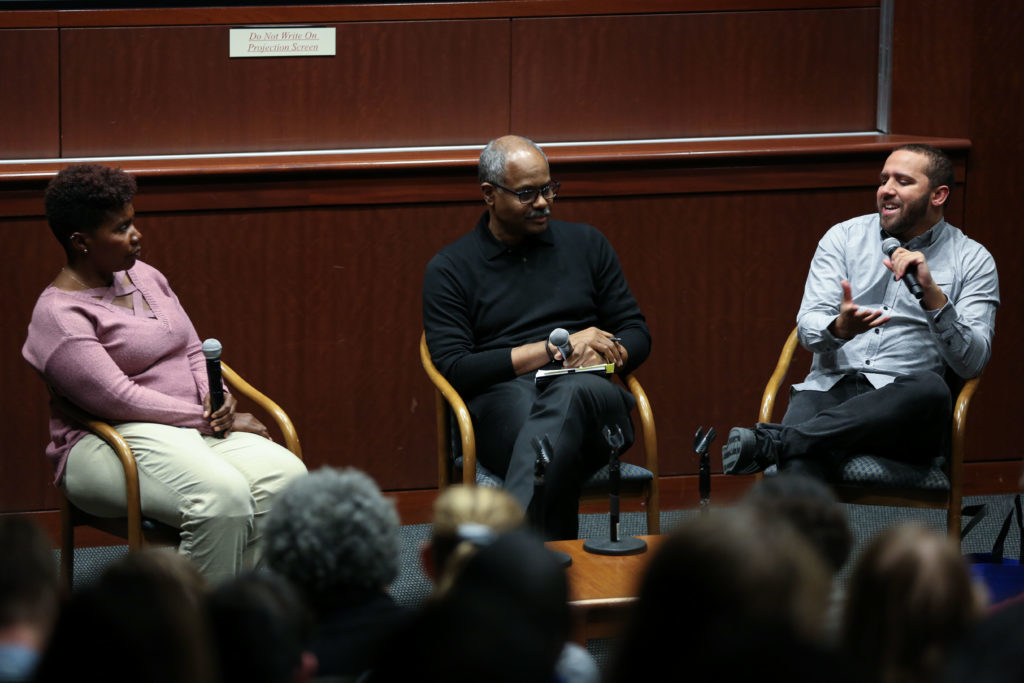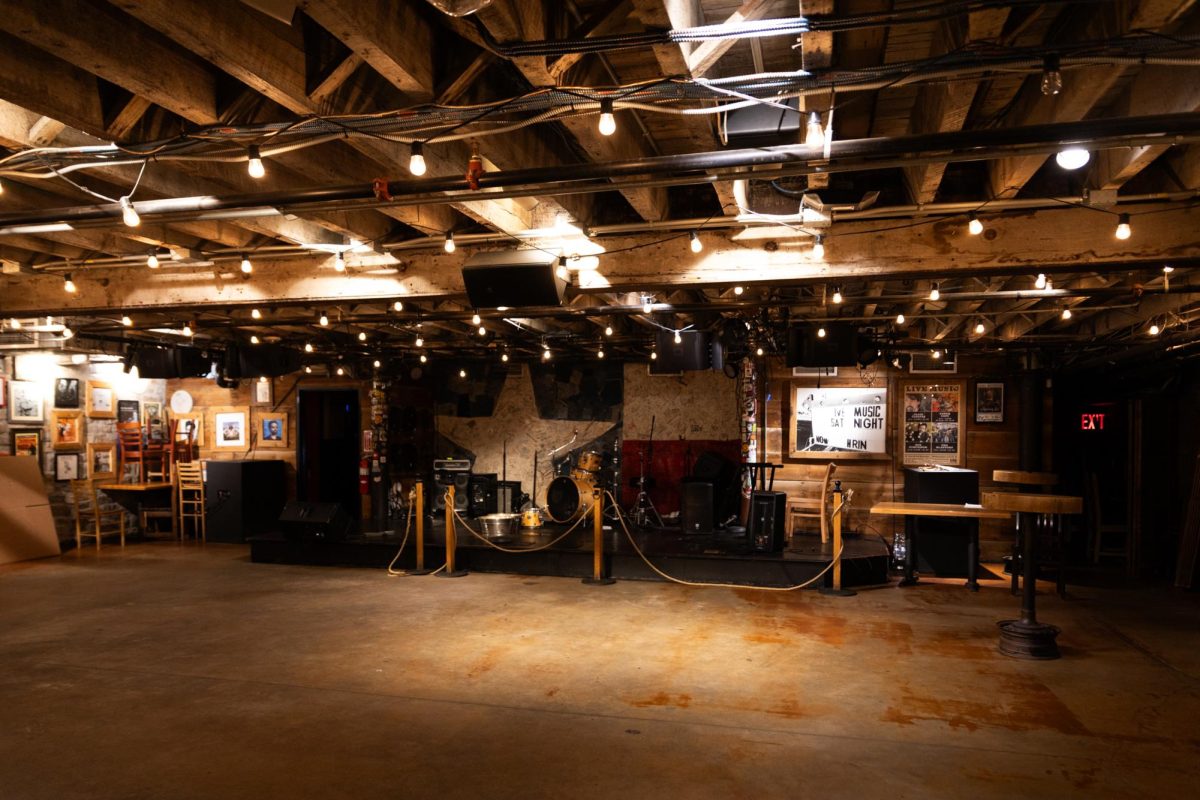Following a screening of a documentary, two journalists discussed race and its relation to institutions like media and law enforcement at a panel Thursday night in the Marvin Center.
The documentary, “Whose Streets?” chronicles the movement that followed the 2014 shooting of Michael Brown Jr. in Ferguson, Mo. The screening and discussion were a part of King Week, an annual series of events put on by the Multicultural Students Services Center to honor the life and legacy of Martin Luther King Jr., and in tandem with the GW chapter of the National Association of Black Journalists.
Jeffrey Blount, a Shapiro fellow in the School of Media and Public Affairs, and Wesley Lowery, a reporter for The Washington Post, spent 90 minutes answering audience questions and providing insight from their careers as black journalists. The discussion primarily centered on how two institutions, the media and law enforcement, have handled uprisings like those portrayed in the film. Imani Cheers, a professor of media and public affairs, moderated the conversation.
“One of the amazing things about being on a college campus should be that you can have open conversations and free thought,” Cheers said. “I tend to notice that a lot of these conversations aren’t being had because nobody wants to be uncomfortable.”
Cheers encouraged audience members to ask the tough questions, and got the ball rolling by asking Blount and Lowery about how the media portrays civil unrest. The two agreed that there are systematic flaws in the way protests are reported, from how stories are chosen to how they are told.
Blount said the media should adopt a more nuanced narrative when it comes to protests, rather than telling the same oversimplified stories. Major news outlets are distracting from the issues that activists are trying to bring attention to by framing civil disobedience stories in the violence and destruction that often accompanies them, he said.
“You take these revolutionary movements that the media portrays almost incessantly through the violent acts that come out of the frustration,” he said. “As if the building burning is more important than the body that was beaten.”
He said this could be attributed to the fact that decisions about what goes into a news show are not often made by people of color, which Cheers agreed with.
Later in the evening, an audience member raised the question of violence by asking panelists about how the image of King is presented and used in today’s discussion of civil rights movements.
Cheers pointed out that King is often portrayed as a strong proponent of nonviolent or non disruptive protests, while in reality he did support the use of force and disruption in his movement.
Lowery responded by stating that in King’s day he had a 67 percent disapproval rating, and his sit-ins were extremely disruptive to people’s everyday lives. He said there is a willful misremembering of King, and that today people present a sanitized version of him in order to condemn modern day civil rights movements.
“People try to thrust him as a counter to disruptive protest they don’t like,” Lowery said. “They will say things like ‘why are you holding up the freeway? Martin Luther King wouldn’t have done that.’”
Other themes discussed throughout the panel included how protest coverage is changing in the wake of social media, as well as how the media and law enforcement need to begin addressing the biases that can plague the ways these organizations function.
“I do think things are changing. I don’t think it’s changing fast enough but I do think it’s changing,” Lowery said.





